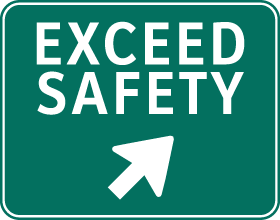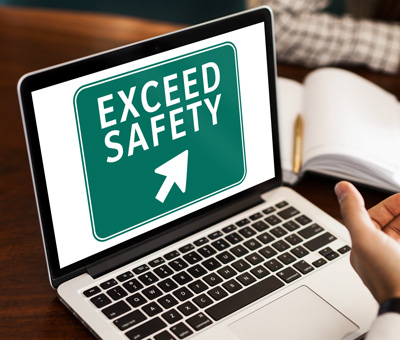The act of welding, while a crucial process in many industries, comes with an array of hazards. Implementing a welding safety policy is of the upmost importance when it comes to protecting employees and the company itself. A robust welding safety policy should include, at the very least, a list of potential hazards, safety measures to be taken, and industry best practices.
With welding comes intense heat, sparks, and oftentimes the use of hazardous materials. Having an understanding of these potential hazards is a critical first step in safeguarding employees from welding hazards. Potential hazards include:
- Arc Flashes: According to OSHA, and arc flash is “a phenomenon where a flashover of electric current leaves its intended path and travels through the air from one conductor to another, or to ground. The results are often violent and when a human is in close proximity to the arc flash, serious injury and even death can occur.”
- Fumes and Gases: When welding, fumes and gases are generated that can lead to both respiratory problems and long-term health issues if inhaled. The fumes and gases often emit toxic elements including zinc, cadmium, and lead.
- Electric Shock: Operating at high voltage, welding can result in electric shock if the equipment is improperly handled. The risk only increases if welding is conducted in wet or damp areas.
- Fire and Explosion: Fires and explosions can occur from a welding spark if flammable materials are left nearby. Good housekeeping when welding can help prevent an incident.
Implementing a robust set of safety measures can mitigate risks associated with welding. These safety measures include:
- Appropriate PPE must be worn by any employee welding. This includes welding helmets with face shields, fire-resistant clothing, and safety glasses. Additionally, respiratory protection when working with harmful fumes and gases is essential.
- An adequate ventilation or local exhaust system can remove welding fumes and gases from the welding workspace. These systems act as barriers, protecting both welders and bystanders.
- It is essential for the employer to ensure that their welders are trained and certified in welding techniques, safe procedures and proper use of equipment.
- Welding equipment must be regularly maintained and inspected. This vital practice ensures that the equipment is in proper working condition. If a faulty piece of welding equipment is used, it can pose a significant safety hazard.
- Good housekeeping goes a long way in maintaining a clean and organized jobsite. Clearing the workspace of flammable materials will reduce the risk of a welding spark starting a fire. A fire extinguisher must be kept nearby, and welders must know how to properly use them in case of fire.
- Safe work practices can reduce risk of incidents occurring. Some examples include maintaining a safe distance from the welding arc, securing tripping hazards, and not welding on containers that were used to hold flammable materials (unless they are properly and thoroughly cleaned).
Prior to a welding job starting, a risk assessment and welding plan must be completed. This is a critical step that can minimize the risks associated with welding. A welding plan should include:
- Jobsite-specific hazards identification.
- Determining appropriate safety requirements and PPE needed for the specific job.
- Defining an emergency action plan in the event of an incident.
- Ensuring that the welding area is sufficiently prepared and safe for welding.
Welding safety is an ongoing effort. Continuous monitoring and evaluation are required, which leads to improvement of welding procedures over time. A good employer must inspire and encourage their employees to make their safety concerns known. Additionally, reporting near-misses and incidents will shed light on areas that need attention, and an employer who takes these seriously will create a safety culture that demonstrates care toward their employees.
Welding, although risky, is a critical process throughout many industries. With that risk, welding safety should be a top priority for both employers and employees. Understanding potential hazards, implementing safety protocol, robust training, and continuous monitoring and improving safety practices will lead companies to better protect their employees, prevent incidents, and maintain safe and productive work environments. Safety in welding, as with anything, should always come first.
https://safetyculture.com/topics/welding-safety/
https://safesitehq.com/welding-safety/








